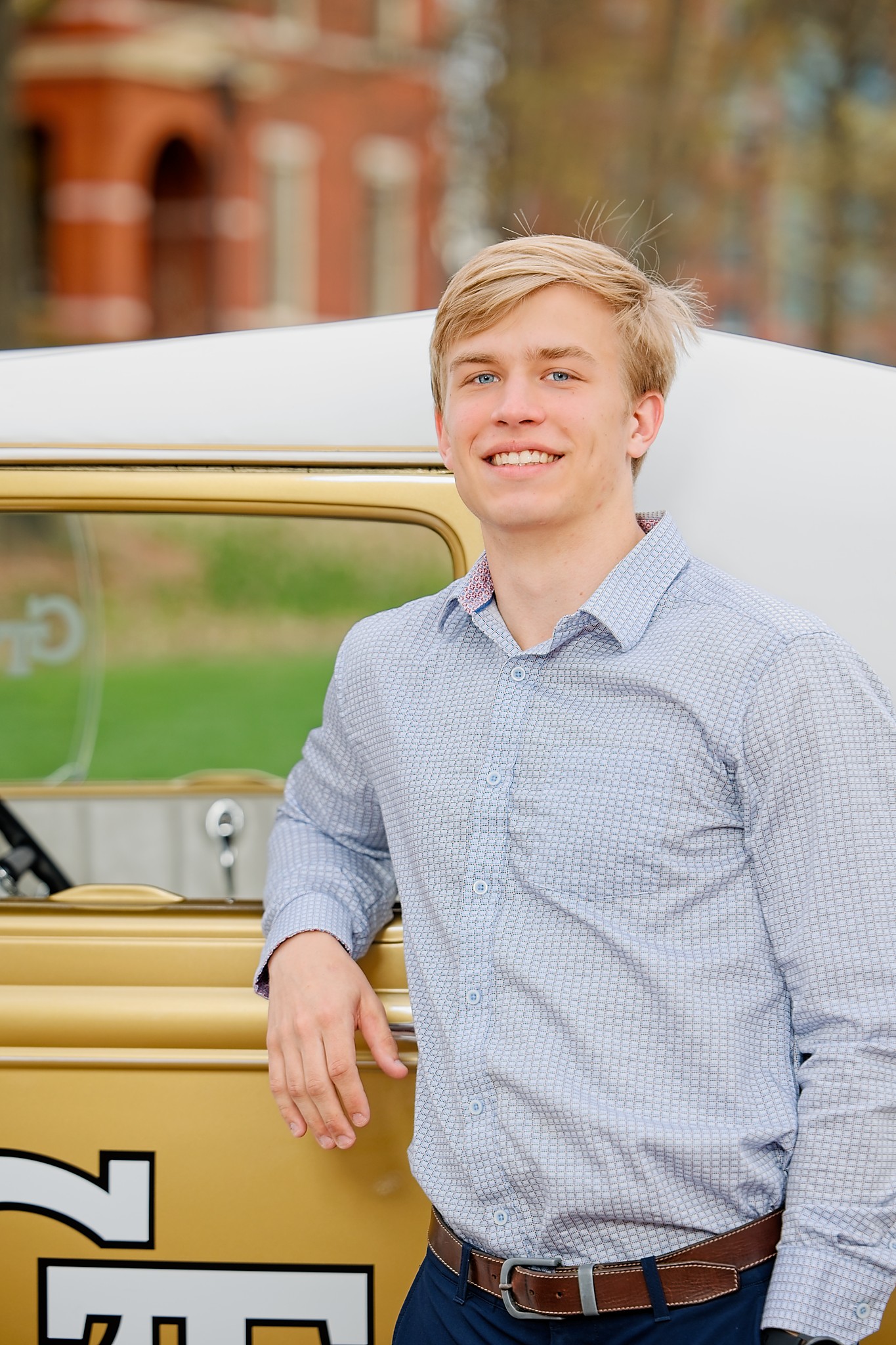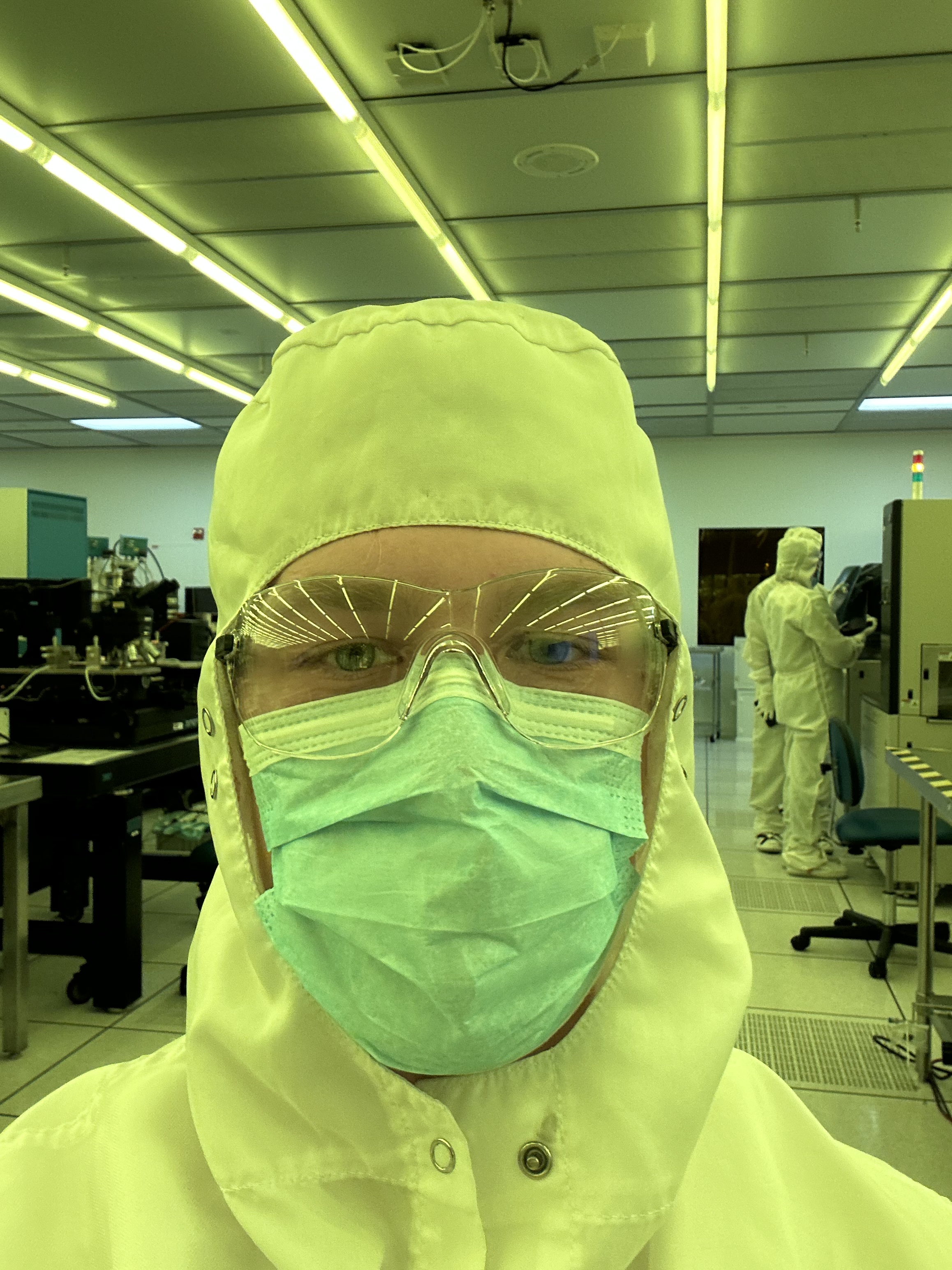Benji Panuski is a 5th-year Electrical Engineering and Physics double major studying new quantum sensing techniques with Dr. Ali Adibi.

How long have you been an undergraduate researcher at Georgia Tech?
I began my undergraduate research journey in August 2022 with Dr. Thomas Gaylord and the Optics Laboratory. I then joined the Photonics Research Group with Dr. Ali Adibi in March 2024, and worked with the Quantum Systems Division at GTRI throughout the fall of 2024.
How did you get involved with undergraduate research?
Research wasn’t originally in the picture when I started at Georgia Tech in the fall of 2020. I originally started out with a desire to pursue industry, but after getting a couple of internship experiences under my belt, I wasn’t entirely satisfied with the prospect of pursuing a professional career directly after my undergraduate education. However, my internship in the summer of 2022 introduced me to the field of Optics. This motivated me to add a second major in Physics and soon enough, I found myself becoming more curious with the science behind Optics and the prospect of harnessing such to create new technologies. Driven by this, I sought out research opportunities within Optics and was fortunate enough to meet Dr. Gaylord and join his group.
What are you working on?
Starting out in Dr. Gaylord’s group, we worked to investigate the fundamental limits of phase resolution in quantitative phase imaging (QPI) techniques. In QPI, it is currently unclear how small of an absolute optical phase difference can be measured between two spatially separated locations in a two-dimensional phase object, which is important in determining the resolution of a QPI microscopy system. Phase resolution is an important metric in QPI, as phase measurements have the ability to identify the onset of dangerous diseases in biological systems, such as different forms of cancer in cells, or validating the viability of developing embryos. Prior QPI research discusses phase resolution measurements down to 50-100 nanometers, but there is little reported with smaller feature sizes, which can correspond to other types of diseases or earlier detection times. To address this, I fabricated 25 nanometer-thick “masks” using photolithography in the Marcus Nanotechnology cleanroom, and we are currently finishing up analysis of these masks.
In conjunction with my work in QPI, I work towards bringing the power of quantum sensors to the chip-scale in Dr. Adibi’s group. Optically-pumped magnetometers (OPMs) are devices that can measure magnetic fields using optically-excited atoms, and have the capabilities of detecting ultra-low magnetic fields - on the order of 10−15- at relatively manageable conditions compared to other quantum sensing methods. One of the numerous exciting use cases for these OPMs is in fetal magnetocardiography (fMCG), where these sensors are used to detect and characterize unborn fetal heart rates. However, typical OPMs utilize free space optics that result in bulky systems that are hard to manufacture and scale. In an effort to improve the accessibility and use cases for these OPMs, our group is working towards developing an integrated photonic platform that miniaturizes the typical tabletop OPM platforms down to the chip-scale. In my ongoing project, I am characterizing the performance enhancement in magnetometers with the implementation of a Fabry-Perot cavity, as well as developing a simulation toolkit that can simulate the dynamics of an integrated photonic OPM platform.

What is your favorite thing about research/researching?
My favorite thing about research is the intellectual freedom to ask deep questions and explore technical solutions that benefit the lives of others. There are few other settings where you have the resources to do something like this. With my degrees in both physics and engineering, researching satisfies both of my academic initiatives, as it gives me the avenue to create new knowledge while also designing and innovating new technologies that can address pressing challenges in a range of applications.
What are your future plans and how has research influenced them?
If I was asked this before my undergraduate research experiences, I’m not sure if I would’ve been able to give a good answer. However, after having the impactful opportunity to engage in significant research directions at Tech, I’ve shifted my career direction towards contributing to the development of scalable quantum technologies. The emergence of quantum science- oriented technologies hold the potential to outperform classical electronic technologies such as quantum computing, but are currently nowhere nearly developed enough to be broadly accessible in scalable forms. Following graduation, I intend to enroll in a PhD program and work towards addressing this lack of accessibility by developing new chip-scale quantum technologies. If we’re considering dream career directions, I’d ultimately hope to bring these scalable quantum technologies to space as a researcher aboard the ISS!
